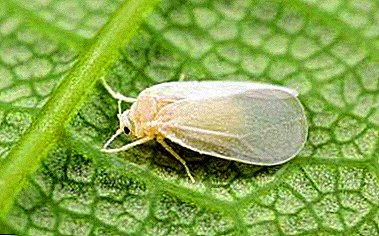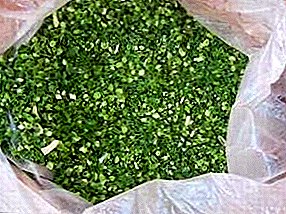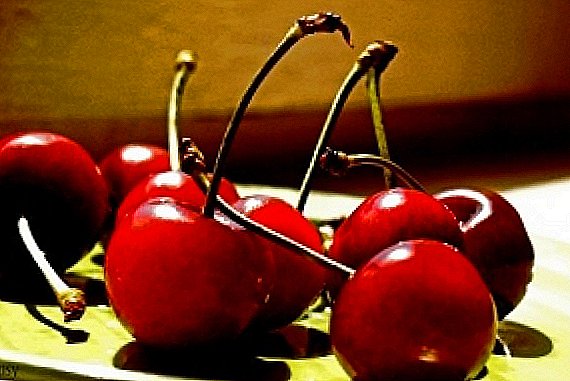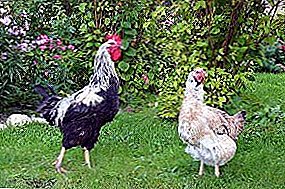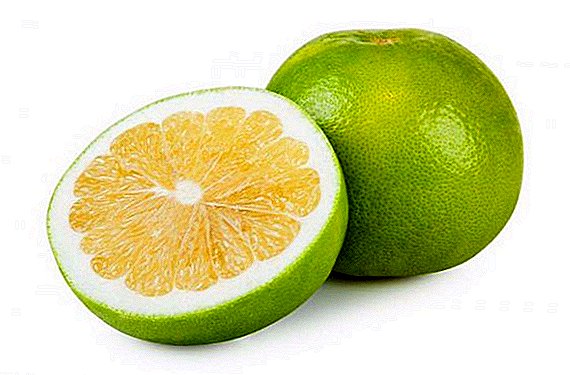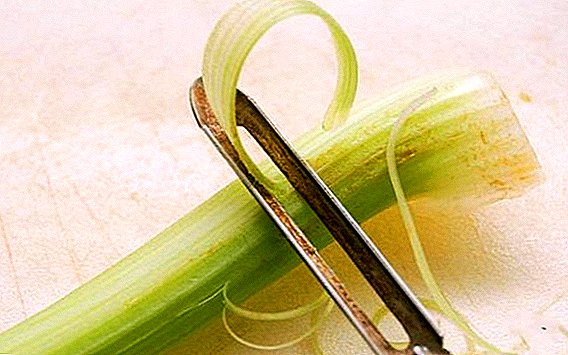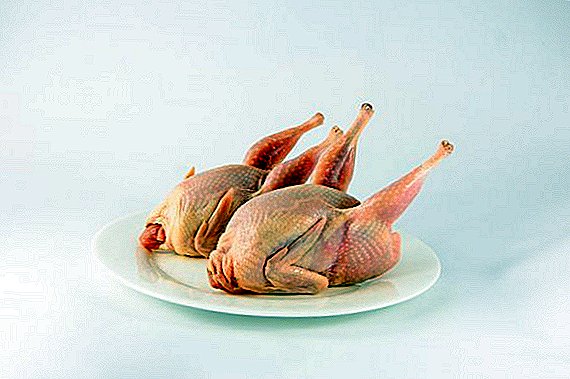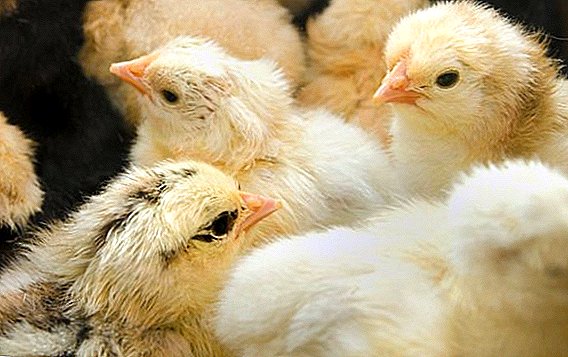 Novice poultry farmers engaged in the cultivation of broilers, may face such a nuisance as feathered diarrhea. What is the cause of the disease and how to deal with it, we consider in this article.
Novice poultry farmers engaged in the cultivation of broilers, may face such a nuisance as feathered diarrhea. What is the cause of the disease and how to deal with it, we consider in this article.
Causes of Diarrhea
Causes of bird disease can be:
- infections caused by poor conditions;
- low quality feed;
- acquired sick individuals.

Did you know? The most unusual breed of chickens comes from Indonesia and is called Ayam Tsemani. In birds, due to a genetic mutation, plumage, beak, crest and even the mucous eye black color. The most interesting is that the meat is also black.
White diarrhea
A possible cause of liquid frequent litter with a whitish tinge is salmonellosis disease. Symptoms of the disease:
- apathy and lethargy in motion;
- difficulty breathing (mainly through the beak);
- slow weight gain.
Birds can also suffer from gastritis, with the following symptoms:
- thirst;
- lack of appetite, refusal to eat;
- fecal transparent color.
Learn how to treat diarrhea in a calf, laying hens and broilers.
Brown diarrhea
Coccidiosis can be a possible cause of dark brown, almost black diarrhea. Recognize the disease can be on the following grounds:
- lack of appetite;
- unwillingness to move, the bird is constantly immobile;
- the mucous eye is yellow, the eyelids are covered;
- feathers raised;
- there are blood impurities in the litter.
 Another cause of brown diarrhea in the absence of the above symptoms, but in the presence of blood clots in the feces may be an injury to internal organs. Injuries are most often caused by poor quality undigested food, in addition, the lack of the necessary amount of vitamins and minerals in the diet.
Another cause of brown diarrhea in the absence of the above symptoms, but in the presence of blood clots in the feces may be an injury to internal organs. Injuries are most often caused by poor quality undigested food, in addition, the lack of the necessary amount of vitamins and minerals in the diet.Green and yellow diarrhea
Green or yellow liquid droppings are one of the signs of infections such as pasteurellosis, typhoid fever and the flu. Symptoms of pasteurellosis:
- thirst;
- difficulty breathing;
- mucous discharge from the nasopharynx;
- external changes (ruffled feathers, blue comb);
- body temperature above 40 degrees.
Important! Most often, veterinarians recommend slaughtering a sick bird, as the ailment is difficult to cure, but spreads quickly.
Bird flu is characterized by such symptoms:
- high, more than 40 degrees;
- rejection of food and a sharp weight loss;
- hoarse breathing;
- inflammation of the mucous membranes;
- beak foam;
- convulsions.
Read also about how to treat non-communicable and infectious diseases of broiler chickens.
Typhoid (pullorosis) is characterized by the following symptoms:
- constantly open beak;
- watery, film-covered eyes;
- bowed head;
- litter of white or green with transparent mucus color with the smell of rot.
Important! Pullorosis can infect a person who is in contact with sick chicken.
 An attack of green diarrhea can cause stale greens or a large amount of it. In addition, the cause of diarrhea can be stress, worms.
An attack of green diarrhea can cause stale greens or a large amount of it. In addition, the cause of diarrhea can be stress, worms.How to treat
They treat the bird and medication, and with the help of folk remedies. How medications are used, and in what quantities, consider below.
Priority measures
The first actions of the owner of the house:
- Disinfection room.
- Change bedding, dishes.
- If necessary - the expansion of the area.
- Check ventilation.
- Check the quality of feed.
- If the hen house is cold, the installation of the heater.
- Give a drinker solution of potassium permanganate.
- Dilute activated carbon in water.
Did you know? When deciphering the remains of bone tissue of a tyrannosaur, scientists discovered the identity of the composition of chicken protein and dinosaur protein, which suggested the same meat taste of both individuals.
"Levomitsetin"
"Levomycetin" is a broad-spectrum drug, an antibiotic that is prescribed for diseases of the gastrointestinal tract, including salmonellosis, respiratory tract (influenza).  For poultry, the medicine is mixed into the feed to hide the bitter taste, the tablets are ground into powder. Dosage - 30 g per 1 kg of weight. The course of treatment, depending on the disease, can last for about a month, with minor disorders - for several days.
For poultry, the medicine is mixed into the feed to hide the bitter taste, the tablets are ground into powder. Dosage - 30 g per 1 kg of weight. The course of treatment, depending on the disease, can last for about a month, with minor disorders - for several days.
"Biseptol"
"Biseptol" - a bactericidal drug, active against staphylococci, salmonella, streptococci and other bacteria and fungi. For the treatment of birds choose a drug intended for children - tablets of 120 mg. For chicken dosage 25 mg per 1 kg of weight, the chicken is divided into two. They are given in the morning and in the evening, adding to the drink, the minimum course of treatment is five days.
Diseases of chickens - prevention and treatment.
Folk remedies
Folk remedies were used by more than one generation of our ancestors, and often they are no worse than pharmacological preparations. Apply these tools as follows:
- clay is added to drinking water (can be found in a pharmacy, clean without impurities);
- rice water has long been known for its bonding properties;
- a little dry wine is added to the drinker; five drops per liter of water is enough for the chicks (the wine should be natural);
- decoction of pomegranate peel;
- decoction of quince peel;
- chamomile decoction.

Broths and drinking give the chicks about two days.
It will be interesting to know how to grow and feed the chickens correctly.
For any diseases of birds, self-administration of drugs should not be used, the symptoms of many diseases are similar, therefore, before treatment, you need to pass an analysis. According to his result, the veterinarian will prescribe adequate treatment. As for folk remedies, they are good for non-communicable disorders, but it is also desirable to make sure of this.
Video: diarrhea in chicks
Reviews





